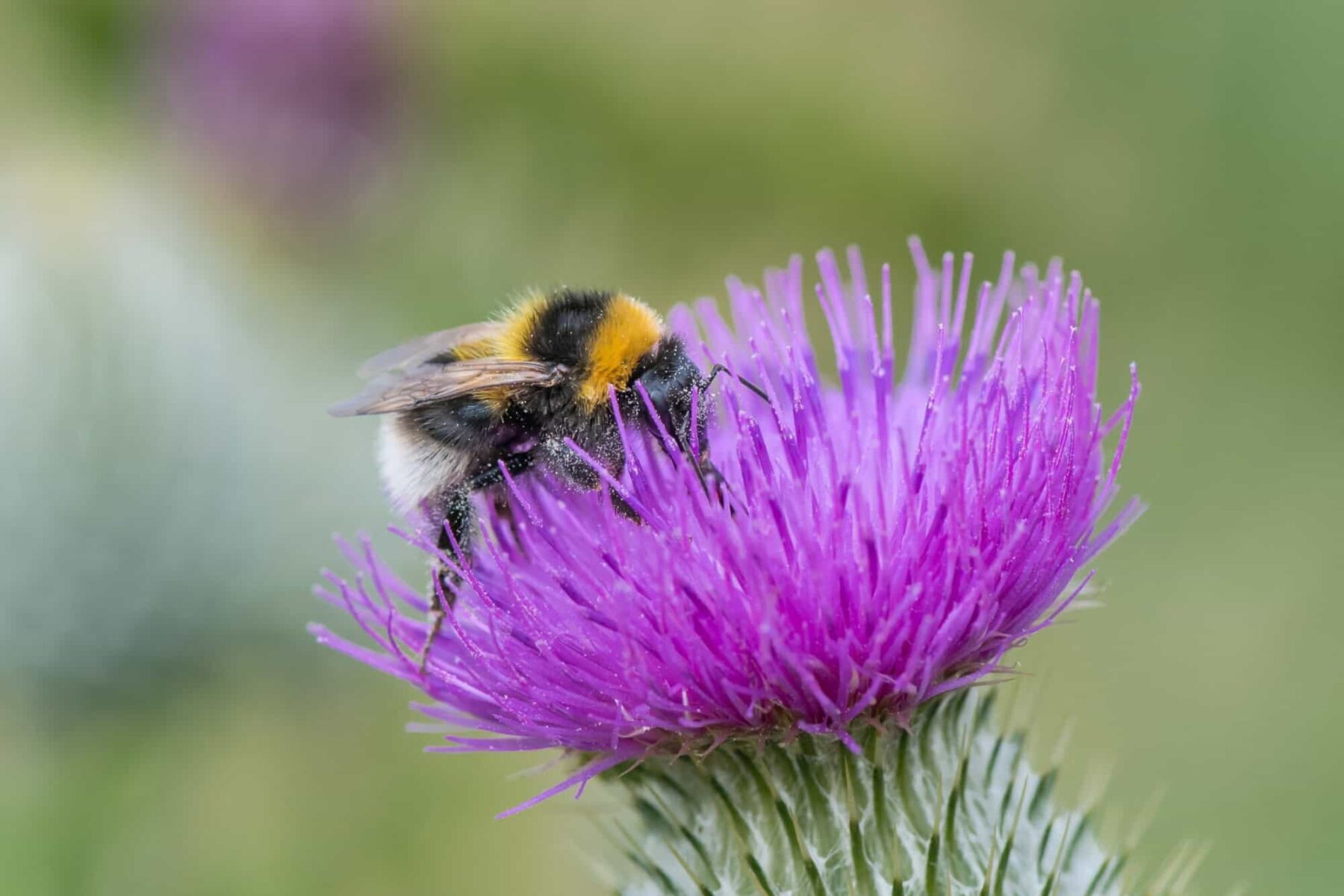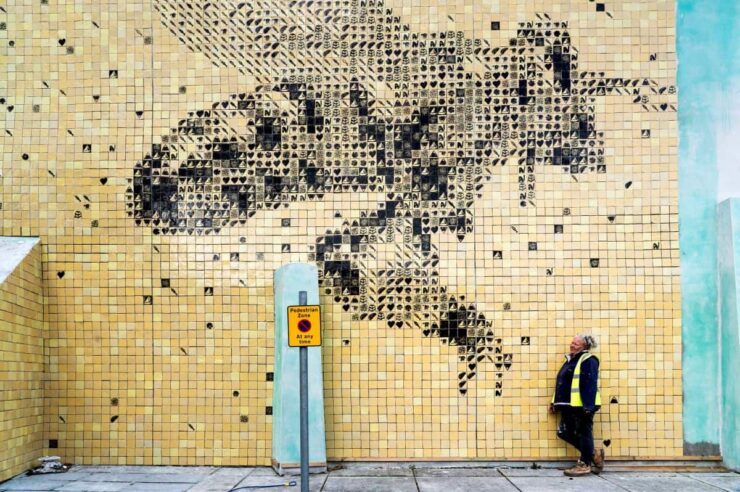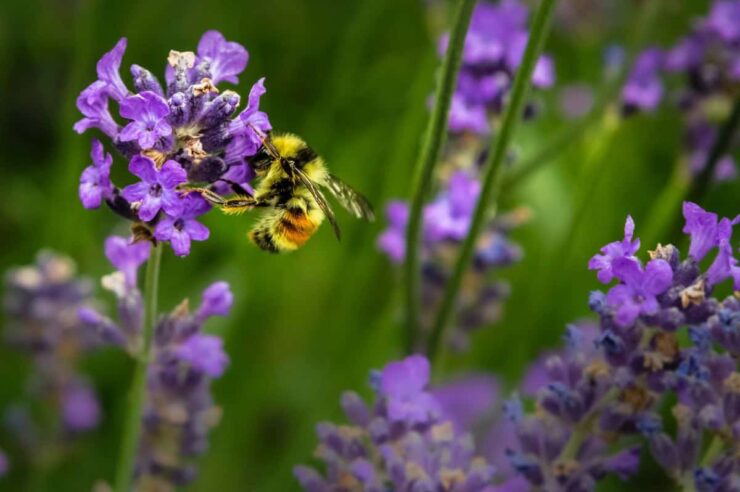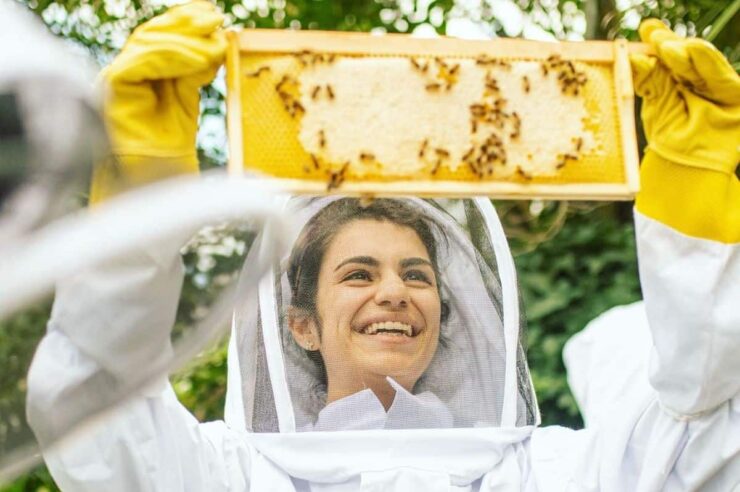From becoming a bee foster carer to using AI to plan your garden, here are 10 lesser-known things you can do to help our winged warriors

How about this for a change of perspective? Instead of growing your garden to boost kerb appeal, plant for bees and other pollinators.
Take your cue from artist Alexandra Daisy Ginsberg, whose 55-metre-long living artwork, Pollinator Pathmaker, opens at the Eden Project in June.
Optimised for the tastes of pollinators, Ginsburg created the garden using a specially-designed algorithm. You can design your own at pollinator.art, which will help you turn your suburban prairie into a pollinator’s paradise.
Image: An artist’s impression of the finished garden. Credit: The Eden Project

Ukraine has for many years been Europe’s top honey producer, making up to 100,000 tonnes of the sticky stuff each year. The Russian invasion is likely to significantly dent that number. In a nation with more than 400,000 beekeepers, that will be catastrophic for both people’s pockets and pollinators.
This is where Bees for Development comes in. The charity uses beekeeping as a way to help some of the world’s most disadvantaged people become self-sufficient. This year it is raising money for Ukrainian beekeepers with the help of Apimondia, an NGO that promotes beekeeping.
Funds will go towards helping these communities to rebuild apiaries and reestablish income. Donate here.
Image: Bees for Development
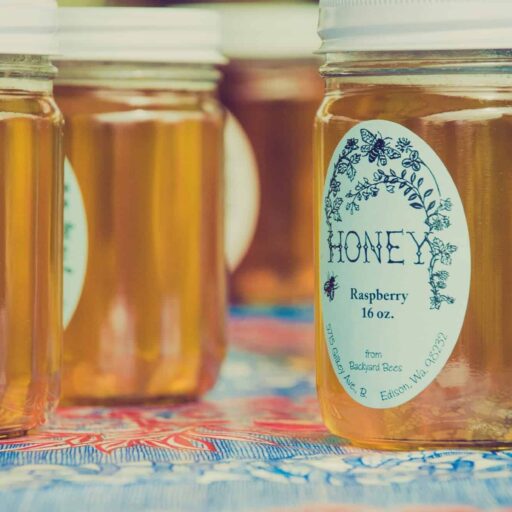
Intensive farming might keep prices low at the checkout, but for bees, beetles, butterflies and other pollinators, it’s like field after field of empty shelves.
Food grown all-year-round is often mono-cropped and heavily reliant on pesticides, which means a lack of biodiversity – a nightmare for pollinators. According to a recent study, a warming climate and intensive agricultural practices have already halved insect populations in some parts of the world.
Locally-grown, organic food, on the other hand, is usually produced more in harmony with nature. Companies like Ecotone and its partners have a stable of fair-trade food brands, which aim to boost biodiversity too.
The free Pollinator Friendly Cookbook from the Pollinator Partnership has bee-friendly recipes featuring ingredients that require pollination. Other good ways to put your honey where your mouth is include buying locally-sourced honey or organic cuttings and seeds from companies like not-for-profit Bee Happy Plants, which specialises in pollinator-friendly flowers.
Image: Amelia Bartlett
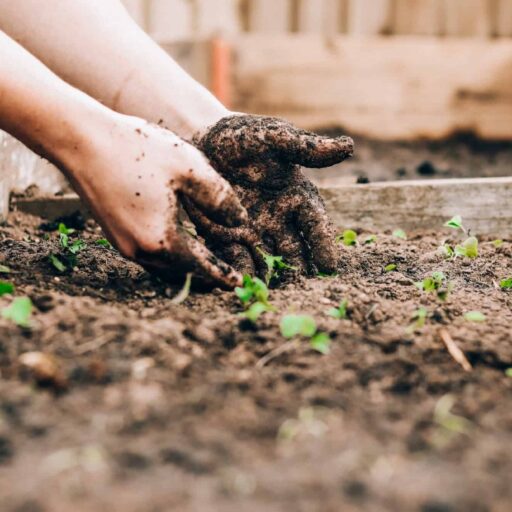
Studies have shown that small gardens are just as crucial to bees as big open spaces. So, if you have a patch of unused land or a spare small plot, but don’t have the time or appetite to help it reach its full pollinating potential, you can rent it out via AllotMe.
Described as the ‘Airbnb for garden’, AllotMe pairs growers with gardens. It’s mainly used for growing food, but bees love strawberries, tomatoes, rosemary, thyme and plenty of other plants we find delicious too.
Image: Sandie Clarke
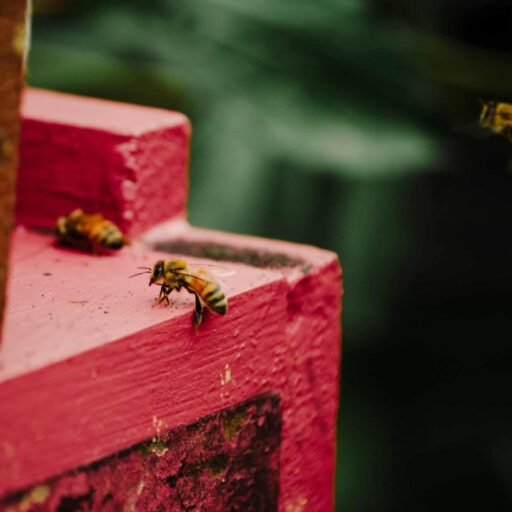
It’s easy to think that bees just knockabout in the warmer months. However, worker honeybees only live for around six weeks in summer but several months in winter. The bees spend the colder months developing their colonies and need nectar and pollen to make it through to spring.
Hive colonies usually decrease by 5-10 per cent in winter, but that figure is growing due to habitat loss. In the US, the number of bee colonies per hectare has declined by 90 per cent since 1962, so give the little guys a hand.
The Bee the Change campaign by the Bumblebee Conservation Trust includes a monthly ‘menu’ of plants that attracts bumblebees and other pollinators all year round.
Image: Rebekah Vos
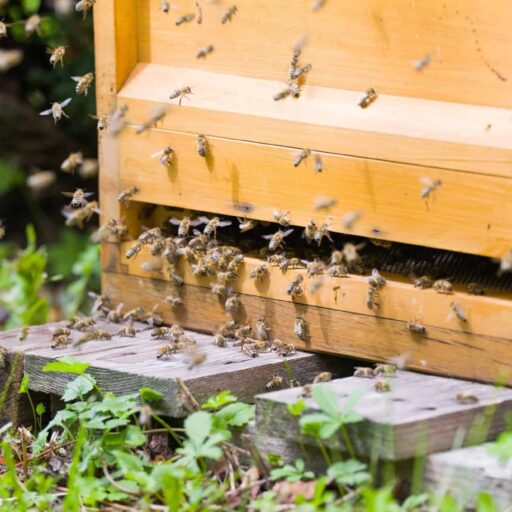
Like honey? Or money? If you’ve got around five feet of spare space – be it a back garden, on a balcony, even a bit of disused land – then you could become a ‘bee foster carer’ with the community interest company Bee Mission.
Started in Hampshire and Dorset, this project aims to put bee colonies into private gardens where you either look after the hives yourself or have a local beekeeper (usually retrained homeless people) maintain the hives on your behalf.
The company covers all the costs and you can take either a cut of the 50kg of honey the hive is likely to produce, or profits from its sale. Tasty.
Image: Georg Eiermann
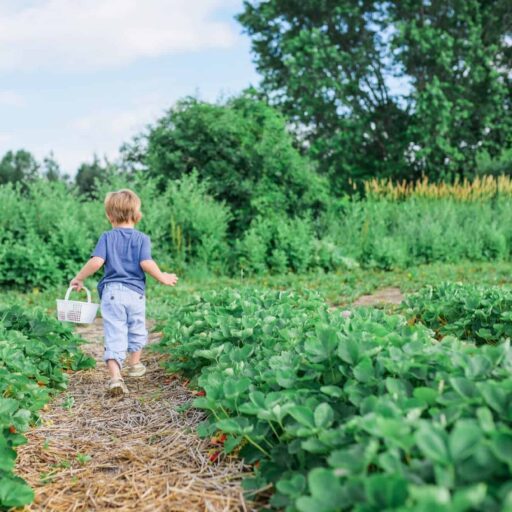
Weed killers aren’t just killing weeds. Alongside habitat loss, pesticides are the number one driver of decreasing bee numbers. Biologists have found that bee pollen can contain more than 150 different chemical residues.
Use your consumer power to enact change. First, simply stop buying pesticides. Then, use the email template on the Pesticide Action Network UK website to ask supermarket bosses to remove pesticides from their shelves. Waitrose and the Co-op already have.
Finally, either set up or join a community weeding scheme to prevent the use of pesticides in your area. When Lambeth Council in London agreed to stop using the weed killer glyphosate, residents on 130 streets volunteered to weed by hand instead.
Image: Paige Cody
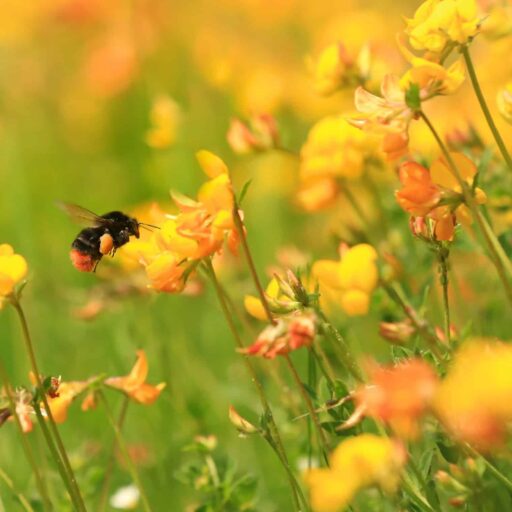
To raise money in support of local wildlife conservation, a number of UK Wildlife Trusts allow you to either sponsor a bee (like the bilberry bumblebee in Shropshire) or adopt one (like a bumblebee up in Scotland).
You’ll get a sponsorship or adoption pack (think: certificates, activity books, postcards, etc), which also make great gifts. Meanwhile, the bees will have their heathland restored around the jagged bare-rock ridge known as the Stiperstones, near Shrewsbury, or enjoy a network of pollinator-friendly sites from Irvine to Girvan, in Ayrshire.
Image: A red-tailed bumblebee. Credit: Jon Hawkins/Surrey Hills Photography
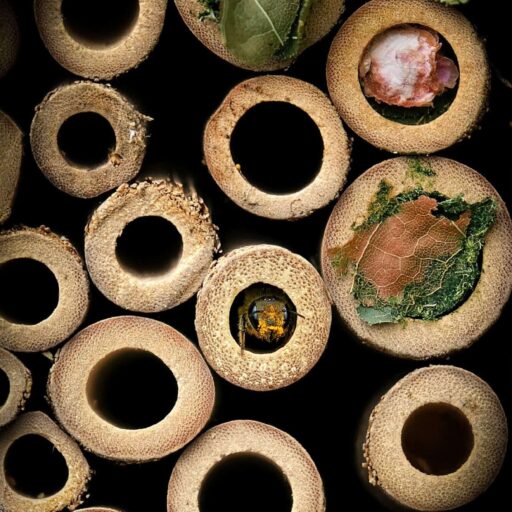
Bees are a busy species – and habitat loss has made their lives significantly more difficult. European conservation group Buglife estimates that, in human terms, this loss would equate to the disappearance of nine out of every 10 miles of road.
To try and get pollinators back on track, the group aims to create and restore 150,000 hectares of flower-rich B-Lines to help bees get around the UK.
These pollen-stuffed ‘superhighways’are being mapped across the country, but think of your garden as their motorway services. As well as planting flowers – shrubs, climbers, hedges and trees are important, too – consider building a bee hotel where solitary bees can lay their eggs. The Woodland Trust has a good blueprint.
Or leave out a drinking station for bumblebees. The Wildlife Trusts suggest filling a plant pot tray, saucer or shallow dish with pebbles to give bees something to land on. Fill it slightly with water so it covers the bottom of the saucer but doesn’t submerge the pebbles. Then they can quench their thirst and move along after a little rest.
Image: Jon Hawkins/Surrey Hills Photography
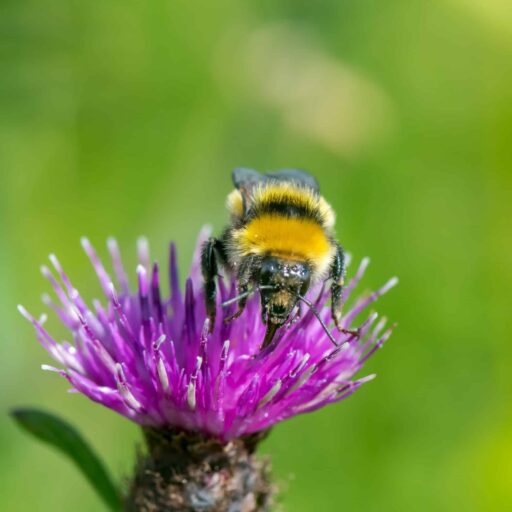
All of the above is great – but how will we know if our efforts are having an impact? The Bumblebee Conservation Trust runs frequent BeeWalks, which help to monitor the population of bees, allowing the team to detect any warning signs of a decline.
Taking place across the country, all walks are voluntary and last for around a mile (you set your route). The idea is to identify and count the bumblebees you see on that same trail each month, between March and October.
The Trust gives plenty of guidance on identifying species, too. In 2020, walkers found that seven species of bumblebee and the honeybee had increased, while 13 species decreased.
Image: A great yellow bumblebee. Credit: The Bumblebee Conservation Trust
Main image: A garden bumblebee. Credit: The Bumblebee Conservation Trust
